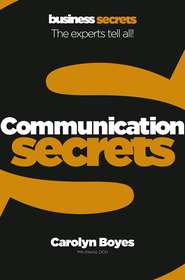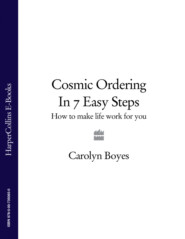По всем вопросам обращайтесь на: info@litportal.ru
(©) 2003-2024.
✖
NLP
Автор
Год написания книги
2019
Настройки чтения
Размер шрифта
Высота строк
Поля
In ancient times, sailors set out to explore the world. The maps they drew up look very different to maps made today in the era of satellite navigation. The ancient mariners’ perception of the world was clearly different from ours. Future generations will also have different maps and ideas about the cosmos as technology evolves. This illustrates a central idea of NLP: that a map – and thus our peception of the world – is always subjective.
In other words, each of us has a unique view on the world. How we see the world is not actually how the world is, it’s simply the internal map (or model) we’ve developed – our way of looking at things. Each of us may think we are looking at things as they really are, but the way we think is just a viewpoint. Someone else may think very differently about the same situation.
• The role of the subconscious. Most of the time, how we think about things is subconscious. It has to be, because the conscious mind can focus only on a few things at a time. Subconsciously we take in much more. Our subconscious runs our body, stores our memories and
one minute wonder Always have respect for another person’s view of the world. Just because someone disagrees with you or has different values, that doesn’t mean that they are wrong (or you are wrong) – simply that you have different maps.
takes in information through the senses. We’re bombarded with information – some say two million bits of it per second, whereas consciously we’re only aware of about seven bits of information per second. That’s why our internal map of the world is unique. Without thinking about it, we pay attention to some things more than others.
Once you recognize that your map is a subjective view of the world, you can begin to do two useful things.
1 Firstly, recognize that other people’s views are equally subjective and valid.
2 Secondly, look inside yourself and work out what you are choosing to pay attention to.
Once you start to perceive the things around you that you’ve previously been ignoring, then you have the choice to change your map if your current one isn’t getting you to the destination you want.
If you change the way you think, you’ll change the way you act. If you change the way you act, you’ll change the results you get.
We each have a unique internal map of the external world.
1.3 Look below the surface (#ulink_d8845968-5594-59c0-9296-e6577df84203)
All the time you are reading this there is a lot going on below the surface. In the few seconds it has taken you to read this far into Secret 1.3, your subconscious has already been very busy. You weren’t aware of what was going on. So what’s happening?
Your brain acts as a virtual reality machine. As you are reading this Secret you are taking in information through your senses: seeing, hearing, feeling, smelling and tasting. You are probably most aware of your visual sense, but the others are still working hard as well.
The subconscious interprets the information it receives and stores some of it as memories.
one minute wonder Bear in mind that the body and mind are linked. What you think affects what you feel. What you feel affects what happens inside your body and, in turn, your body language and your behaviours which are visible to other people. So how you think ultimately influences how other people react to you.
Three big filters are always being used by the subconscious:
1 Deletion. First of all your subconscious promptly deletes most of the information it receives. That’s why you don’t remember the two million bits of information you are smelling, hearing and feeling as you are reading this. For example, how aware are you of the feeling in your arms or legs? Maybe you are now, but were you a few seconds ago?
2 Distortion. At the same time you continually distort some of the information to store it more easily. For example, while travelling through the countryside you see a pretty cottage, which reminds you of a picture you once saw of a fairytale house made of gingerbread. Later, you don’t remember the exact colour and details of the house, only a sense of it as the fairytale house.
3 Generalization. The subconscious groups information into categories. For example you see someone sitting on something that looks roughly like another object you habitually call a chair. “Hey”, says your subconscious! “That’s useful. I will describe this as a chair as well.” (Even if the object is actually something else.)
Your subconscious always works hard for you, but its habit of distorting, deleting and generalizing all give rise to beliefs and opinions about the world that may not always be useful to you.
What can you do about it? First of all, start paying attention to your beliefs, and actively adopt and emphasize those beliefs that empower rather than limit your business success.
Your subconcious filters bits of information to create your highly personal view of the world.
1.4 Recognize your preferred sense (#ulink_6fbf0287-3730-5a63-ad6a-d9231a34e7b5)
Each day we experience the world through the five senses. These are known as the Visual, or seeing, sense; the Auditory, or hearing, sense; the Kinesthetic, or touch and feeling, sense; the Olfactory, or smell, sense; and the Gustatory, or taste, sense. People rely on these five senses to different degrees.
We store representations of the outside world inside our subconscious using our senses. This is how a memory can bring back a smell, picture or sound. In NLP the senses are called representational systems.
We each subconsciously use one sense more than the others. Some store memories primarily as images. Others delete more of what they see, and store more sound images. If you subconsciously prefer the visual sense you may be drawn towards visual work. If you’re more sound focused, then you may be especially fascinated by music or language. Or perhaps you prefer touch and feeling, and so favour physical pursuits, such as sport or working with your hands.
Just because you have a preference for one sense over another doesn’t mean that you can’t use all of them. This affects learning differences. If you prefer the visual, you may want visual props when
one minute wonder Be careful how you present information to others in business. Listen to the language the other person is using and use similar language back to them. If you are not sure about someone’s preferred systems, make sure you present in a range of ways to cover different groups. Don’t use only your preferred style.
learning. Auditory learners need to hear information to take it in efficiently. Kinesthetic learners like to try out what they are learning, for example through exercises and role play.
People give away their preferred sense through the words they choose. Use their preferred words and they will relate to you better. For example:
• Visual words. Look, see, clear, bright, sparkling, picture, clarify, perspective, illustrate, focus, colourful, watch, illusion, shine, dim, vivid.
• Auditory words. Noise, hear, resonate, deaf, speak, rhythm, ask, silent, tune, pitch, buzz, audible, earful, remark, tongue-tied, rings a bell.
• Kinesthetic words. Feel, unfeeling, solid, concrete, hit, pressure, hothead, handle, soft, hard, cold, tickle, seize, pressure, get in touch with.
By finding out which senses you and your colleagues individually prefer, you can learn about your different maps of the world, different learning styles and how to communicate more flexibly.
People vary in the way they perceive the world through the different senses.
1.5 Discover your beliefs (#ulink_02b8a608-42bd-5da4-81d3-7f2c4c95bde0)
Many of us use phrases like “It’s true that…”, “That is wrong”, “That is totally right…”, “I believe that…”, “Well that’s a matter of opinion, but this is indisputable…”, “My opinion is…”, “According to my perspective…”. These are all statements of beliefs.
According to your model of the world something may appear to be a fact when it is really a very deeply held belief.
As we grow up we begin to take on views of the world. We can’t help doing this. We have to believe something otherwise there would be just too much raw information swishing about. As we develop beliefs we often tend to focus on the information that supports our existing beliefs so they become stronger. It tends to be less often that we notice information that undermines existing beliefs and disproves them.
one minute wonder ‘Am/am not’ statements are a great way to uncover subconscious beliefs. Listen out for people making statements like: I am…I am not…; My friends are…my friends are not…; Life is…life is not…; The world is…the world is not…; Business is…business is not…; My future is…my future is not…
“It doesn’t matter where you are coming from. All that matters is where you are going.”
Brian Tracy, performance coach
If you hold lots of deep beliefs it can make you very rigid in your thinking and give rise to other strong opinions. It may result in an inflexible model of the world. If you have very rigid beliefs you may clash with other people who hold very different models of the world. Just think about some of the great conflicts in the wider world. They take place between different groups who firmly believe their opinions to be right and who cannot find a meeting place with their enemies’ beliefs.
You can begin to uncover your beliefs very simply. Just ask yourself:
• What do I believe about business / work / other areas?
• Or write down, “I believe…(about this area of my life). I do not believe…(about another area).”
This will uncover some basic beliefs that you might not have been fully conscious of.
If you want to change the results in your life, then scrutinize your beliefs. If they are blocking your success, then start thinking about what other beliefs might be useful to you.
Identify your beliefs and ask yourself if they support you in being successful.










